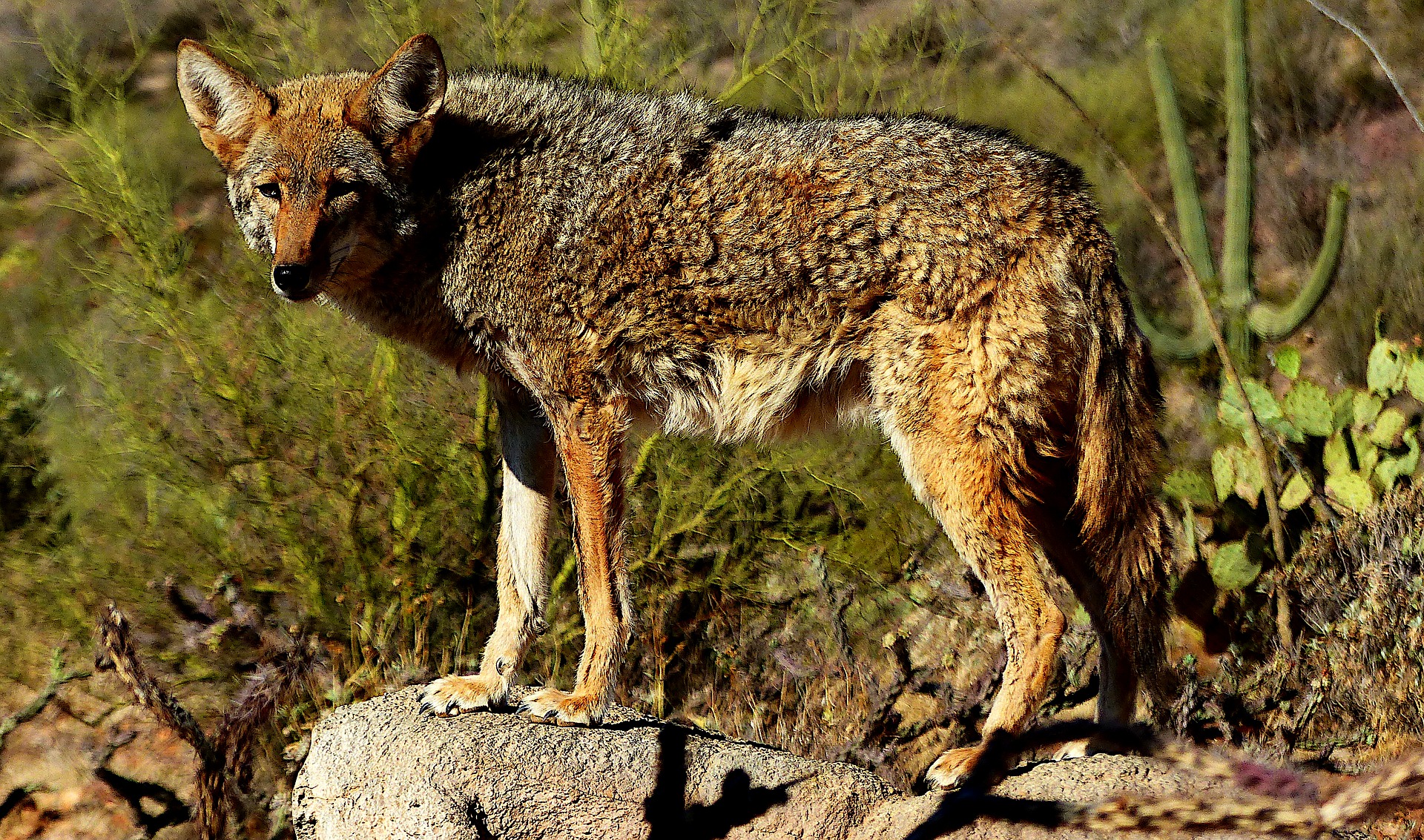COMMENTARY BY DR. DAVE SAMUEL
We are becoming an urbanized society. In fact, by 2050, over 65% of all humans will live in urban and suburban areas. At the same time, coyotes are becoming more common in those same areas. This leads to a number of questions.
To get at some of this, I searched the internet for research studies on coyotes in cities and found a number of studies. For example, in Atlanta close human-coyote encounters were rare (12% of all reported interactions) and most of those occurred when there was a pet involved. Also, coyotes were most likely to be observed in parks, golf courses, and other areas with low-density areas such as large-lot home areas. Even with a good population of coyotes, their presence in Atlanta is mostly benign.
Chicago has a lot of coyotes, mainly because they have some large green spaces, including golf courses, scattered throughout the city. There, they were seen more at night and the offseason when golfers were absent. This differed from their use of parks when they were present and visible all the time. Maybe the fact golfers carry clubs deterred their presence (just kidding).
Madison, Wis., examined 398 citizen accounts of human-coyote encounters. They found most encounters occurred in coyote breeding season (February). Citizens rated the level of coyote aggressiveness and not surprisingly those ratings varied significantly. On a scale of 0-5 with 0 being calm and 5 being aggressive, 90% of citizens estimated aggression as a 0 and 7% rated it as a 1 As was found in Atlanta, most coyote encounters were rated as benign.
However, coyotes have been known to attack humans, especially children. One study found attacks on humans occurred with greater frequency in large urban areas in the western United States, especially areas with high human development and less forest cover. Another study noted more attacks where there were lots of buildings, which meant there were higher densities of humans in a concentrated area.
A study done comparing citizen opinions in an urban county and a suburban county. Urban respondents had lower levels of coyote acceptance and higher preference for coyote removal. As you see, in general, when it comes to human safety, coyotes in towns aren’t much of a problem.
Comment on cat column
Several weeks ago, I wrote about how to lower the desire of house cats wanting to kill songbirds when outside. One of my readers from Greystone sent me a great idea, and it is one they use. They have an invisible fence for their dog, but they also put detection collars on their cats. They indicated the cats quickly learned how the fence works, so now they go outside and don’t bother wild birds. Interesting to me was in the several studies where options were tried, none mentioned using an electric fence. Sounds like a pretty neat solution, especially for those who have a fence already in place for their dog.
Comment on eagles and windmill column
Six months ago, I wrote a column about windmills killing eagles, and suggested there wasn’t much going on to mitigate that problem. There is no question that the windmill industry is taking a major public relations hit because of eagle mortality at windmills. It turns out this industry is working on that problem. A reader with work experience in that area emailed me and described research being done.
I don’t have all the details, but Duke Energy is experimenting with radar at their Wyoming Top of the World wind farm. The idea is to track eagles during migration periods and shut down the windmills when eagles are near. In 2013, Duke Renewables plead guilty to killing 14 golden eagles and 149 other migratory birds at two Wyoming wind farms. This was the first time there was a prosecution for killing birds.
This apparently led to some major industry efforts to mitigate this issue. They worked with something called the IdentiFlight Aerial Detection System to promote coexistence of birds and windmill farms. They are installing 24 units at the Wyoming farms where there are 110 turbines on 17,000 acres. Duke believes these IdentiFlight units can detect and identify the species of birds flying within 0.6 of a mile. When an eagles speed and direction show a risk of collision, an alert shuts down the turbine in its path.
Apparently, IdentiFlight detected 96% of birds detected by observers and 562% more birds than observers. IdentiFlight misclassified nine of 149 eagles as non-eagles for a false negative rate of 6%. The median distance at classification for birds classified as eagles by IdentiFlight was 867 yards. Sure sounds like a big step in the right direction. Apparently these systems are now being deployed on farms around the world.
Always nice to hear and learn from my readers.
Dr. Samuel is a retired wildlife professor from West Virginia University. His outdoor columns have appeared, and continue to appear, in Bowhunter magazine and the Whitetail Journal. If you have questions or comments on wildlife and conservation issues, email him at drdave4@comcast.net.
TWEET @DominionPostWV




